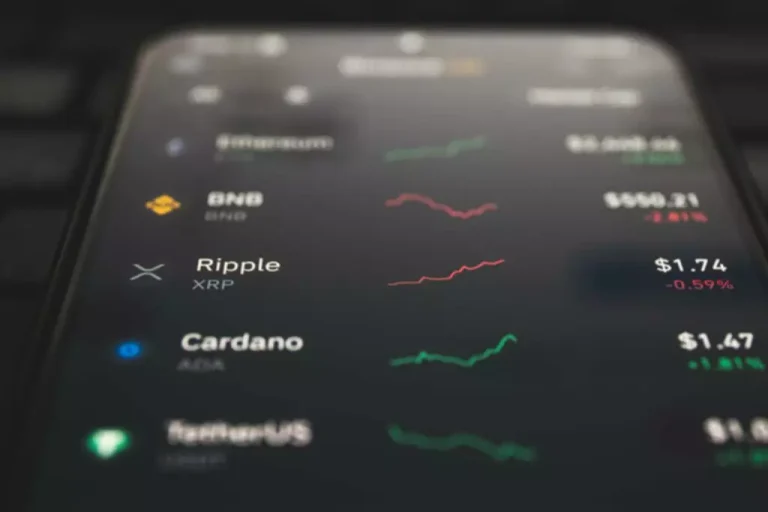Content
Leaving those aside, the technical analysis Broker of stocks and trends has a fascinating limitation unique to itself. Chart patterns are a subjective form of technical analysis where technicians attempt to identify areas of support and resistance on a chart by looking at specific patterns. These patterns, underpinned by psychological factors, are designed to predict where prices are headed, following a breakout or breakdown from a specific price point and time. For example, an ascending triangle chart pattern is a bullish chart pattern that shows a key area of resistance.
Differences between Technical and Fundamental Analysis
Chart patterns have been analysed for over 100 years to understand trends surrounding the relationship between emotions and market movements. We will https://www.xcritical.com/ go on to explain each of these tools in more detail so you understand how they can help you trade using technical analysis. This text is informative in nature and should not be considered an investment recommendation. Any investment or trading is risky, and past returns are not a guarantee of future returns. Remember, you can view technical charts by logging into your FOREX.com trading account and selecting the name of any market. Traders also use independent charting software, such as the popular MetaTrader trading platform, available through FOREX.com.
- There are several different chart types, but most traders use line, bar, or candlestick charts.
- While the second section provides an example of the hypothetical takeaways – in technical analysis terms.
- Technical analysis differs to fundamental analysis as it does not attempt to measure the intrinsic value of a security, but rather it identifies different market patterns to use as a basis for investment decisions.
- Conversely, a falling OBV suggests lower prices when selling volume outpaces buying volume.
- The products and services available to you at FOREX.com will depend on your location and on which of its regulated entities holds your account.
How does technical analysis work?
I obviously saw something his analysts didn’t see or they may have seen it and discounted its importance. Nevertheless, this example underscores the importance of looking at technical indicators from many different perspectives. The flow of funds analysis looks for trends in bank trust accounts, customer’s accounts, foreign investors, initial public offerings and secondary offerings, insurance companies, margin debt, mutual funds, and pension funds. These sentiment indicators are actually measuring the emotions difference between fundamental and technical analysis of these investors. And these sentiment indicators swing back and forth between extremely bearish to extremely bullish.

What you need to know about technical analysis

Beginners might find it easier to start with technical analysis and study fundamental analysis later. While some traders will be happy to only rely on technical analysis, some find value in fundamental analysis and incorporate it into their trading strategy. Just as is the case with finding the right trading strategy – the only way to find out is by trial and error. The Bollinger Bands (BB) indicator is another oscillator-type that is quite popular among traders. The BB indicator consists of two lateral bands that flow around a moving average line.
Fundamental analysts will ignore chart trends in favor of digging through the balance sheet and the market profile of a company in search of intrinsic value not currently reflected in the price. There are many examples of successful investors using fundamental or technical analysis to guide their trading and even those who incorporate elements of both. Technical analysts also widely use market indicators of many sorts, some of which are mathematical transformations of price, often including up and down volume, advance/decline data and other inputs. These indicators are used to help assess whether an asset is trending, and if it is, the probability of its direction and of continuation.
Technical analysis is a method of visually analyzing, interpreting, and forecasting price movements using historical patterns and statistics in order to find potential trading opportunities. Technical analysis is the study of historical price action in order to identify patterns and determine possibilities of the future direction of price. The risks of loss from investing in CFDs can be substantial and the value of your investments may fluctuate. 72% of retail client accounts lose money when trading CFDs, with this investment provider. CFDs are complex instruments and come with a high risk of losing money rapidly due to leverage. You should consider whether you understand how this product works, and whether you can afford to take the high risk of losing your money.
T-bills are subject to price change and availability – yield is subject to change. Investments in T-bills involve a variety of risks, including credit risk, interest rate risk, and liquidity risk. As a general rule, the price of a T-bills moves inversely to changes in interest rates. Although T-bills are considered safer than many other financial instruments, you could lose all or a part of your investment.
In the age of the internet, more people have access to these tools and are using them to shape their trading plans. Investors using fundamental analysis track interest rates, gross domestic product, manufacturing data, and unemployment rates to make informed predictions about stock prices. Technical analysis is valuable in crypto investing even without long decades of historical price data. For example, with Bitcoin, technical analysis shows that dramatic price drops and periods of high volatility have been followed by consistent rises to new highs.
The MACD is generated by subtracting two EMAs to create the main line (the MACD line). The first line is then used to generate another EMA, resulting in a second line (known as the signal line). In addition, there is the MACD histogram, which is calculated based on the differences between those two lines. As mentioned, TA is basically the study of an asset’s current and previous prices. The main underlying assumption of technical analysis is that fluctuations in the price of an asset are not random and generally evolve into identifiable trends over time.
Axi clients are also able to gain access to Autochartist – a tool used for automated technical analysis that continuously scans the market for opportunities. MetaTrader 4 is one of the most popular trading platforms available, and it gives you the opportunity to access a wide variety of indicators, as well as drawing tools. Finding the right trading strategy will require a lot of trial and error. Beginners generally start with very basic strategies and then start to add more and more indicators and rules to them as they continue to learn.
The indicator is weighed based on historically-adjusted returns, common sense, an investor’s objective, and logic to evaluate investments and identify trading opportunities. A technical indicator is usually shown graphically and compared with the corresponding price chart for analysis. The mechanics of a technical indicator captures the behavior and sometimes the investors’ psychology to provide a clue of future trends of price activity. Joseph de la Vega adopted early technical analysis techniques as far back as the 17th century to predict Dutch markets. However, the technical analysis theory as we know it was first introduced by Charles Dow in the late 1800s with the Dow Theory. In today’s trading, technical analysis uses hundreds of patterns and signals that have been developed through years of insight and research.
In a downtrend, the pattern may develop into a reverse head and shoulders pattern, which is the same pattern but inverted. Since chart patterns offer so much insight into rising and falling trends, it’s essential to identify the most common patterns and what they mean. With so many variations available, traders often experiment with and choose to implement those they feel work best for them. As a result, it’s not uncommon for them to combine several indicators as a trading strategy.
They believe that certain trading patterns tend to reappear, and generally produce similar outcomes. The best place to start is by studying long-term charts, such as monthly and weekly charts spanning several years, as these give a good overview. Once a trader has gained this perspective, daily and intraday charts can be consulted. This approach helps, because a short term view in isolation can be deceptive. A technical analyst uses charts as the source of any information they are gathering.

